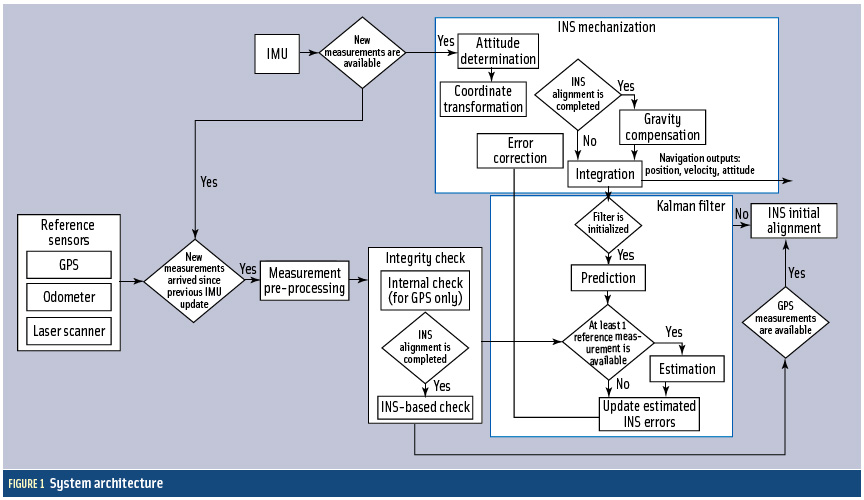After technical and political setbacks, Russia gets ready to launch its first CDMA-equipped satellite in February.
Russia’s GNSS program started off the year recovering from a series of setbacks that resulted in the dismissal of two space officials in the wake of the December 5 launch failure of three GLONASS-M satellites.
The postponed launch of the next-generation GLONASS-K demonstration spacecraft in 2010 meant that the program ended up the year with four fewer satellites in orbit than expected.
After technical and political setbacks, Russia gets ready to launch its first CDMA-equipped satellite in February.
Russia’s GNSS program started off the year recovering from a series of setbacks that resulted in the dismissal of two space officials in the wake of the December 5 launch failure of three GLONASS-M satellites.
The postponed launch of the next-generation GLONASS-K demonstration spacecraft in 2010 meant that the program ended up the year with four fewer satellites in orbit than expected.
Russia had anticipated declaring full operational capability (FOC) for GLONASS by March; now that may not occur until June, said Russia’s Federal Space Agency (Roscosmos) Director Anatoly Perminov said in a January 12 report by ITAR-TASS, Russia’s state news agency.
Constellation Status
The GLONASS-K launch, delayed due to incomplete preparations at the Plesetsk, Russia, launch site, now is expected to take place near the end of February. The prime contactor, ISS-Reshetnev, completed ground tests on the demonstration spacecraft in December.
The new model will broadcast the first GLONASS code division multiple access (CDMA) channelization protocol in addition to the system’s usual frequency division multiple access (FDMA) transmissions. That will bring the system into closer alignment with other GNSSes, which all use CDMA.
Perminov said the next launch of another three GLONASS-Ms is scheduled for August. As of January 18, the system showed 26 operational satellites in the GLONASS constellation with 21 of them transmitting healthy signals, according to the Roskosmos Information-Analytical Center, with the other five currently in “maintenance” status.
In response to the failure, two older, spare satellites in the constellation have been activated and moved to new orbital locations.
The system needs to have 24 actively transmitting satellites to support an FOC declaration. How many of those in maintenance status can be restored to service is uncertain, although all are fairly new — having been launched within the last five years. One of them (#726), however, has been off-line since August 31, 2009, due to a problem with the signal generator that appears unlikely to be fixed.
An additional consideration: GLONASS orbital plane 1 has only seven operational spacecraft, with one undergoing maintenance since last August. The nominal configuration of the constellation calls for eight satellites in each plane in order to provide the optimal geometrical coverage worldwide.
Consequences of Failure
In addition to dismissing the space officials in the wake of the December launch failure, Russian President Dmitry Medvedev reprimanded the head of Roscosmos.
A December 29 press statement from the Kremlin said, “Following the report presented to the President by Deputy Prime Minister Sergei Ivanov, a decision was made to remove from the office Vice-President and First Deputy General Designer of the S.P. Korolev Rocket and Space Corporation Energia Vyacheslav Filin and Deputy Head of the Federal Space Agency (Roscosmos) Viktor Remishevsky for the errors made in the calculations for refuelling the vehicle’s Block DM-3 upper stage. Head of the Russian Federal Space Agency Anatoly Perminov was reprimanded.”
The statement added, “In accordance with Dmitry Medvedev’s instructions, Roscosmos will take additional measures to reinforce disciplinary measures.”
RKK Energia manufactures spacecraft and space station components and is prime developer and contractor of the Russian manned spaceflight program.
The Proton-M rocket launched from the Baikonur facility in Kazakhstan on December 5 apparently had been equipped with larger fuel tanks that were then filled to capacity. The heavier load of liquid oxygen — reportedly 1.5 to 2 tons more than normal — apparently caused the launcher to deviate from its planned trajectory and fall into the Pacific Ocean more than 900 miles northwest of Hawaii, according to an inter-ministerial commission charged with investigating the launch failure.




